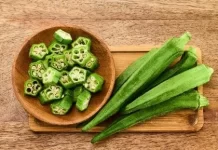Swarms of locusts have stripped large tracts of farmland across 10 districts in Somaliland, leaving farmers without any crops left to harvest.
The locusts have eaten crops including pumpkins, pepper, tomatoes, lettuce onions, pawpaw, and oranges, in districts in Sahil, Marodi-jeh, Awdal and Sanag regions.
Somaliland’s minister of agriculture, Ahmed Mumin Seed, told Radio Ergo they had assigned a committee to assess the losses caused by the locusts.
“They poured in from Yemen. They came across the sea. We received alarms from the people and sent a team from the ministry. We have also been informed that the locusts are in Lughaya, Gargaara and even in the coastal areas,” said the minister.
The minister said they had contacted the Desert Locust Control Organization for Eastern Africa, based in Ethiopia, and expected representatives to arrive in a week to deal with the eggs laid by the locusts. Without helicopters to spray insecticide, the ministry could do nothing more.
According to this month’s Desert Locust Bulletin by the Food and Agriculture Organisation (FAO), numerous swarms in the Yemeni highlands have moved to northern Somalia and Ethiopia.
Ismail Saleban Abdi, the head of the farmers’ association in Agabar, said they had burned the ruined crops. He said in Agabar, Da’ar-buduq, and Harrirad, the locusts had destroyed 485 farms.
Ahmed Hersi Bade, a farmer in Agabar, said his small farm had been stripped bare last month.
“Clearly the locusts have had a huge impact and it’s not on my farm only, they have invaded huge areas of land. They destroyed all the plants on my farm,” said Ahmed.
Ahmed was hoping to recover this year after his crops were destroyed by Sagar cyclone in 2018, but again he has lost everything.
“After the cyclone, I bought a $250 machine and cultivated my land. I planted crops and invested in fuel and workers. The total estimate of my investment is not less than $5,000,” said Ahmed, who is worried about repaying his debts.
Abdiqadir Mohamud Ahmed in Agamsaha said he was worried that the devastation was not over yet.
“The larvae are worse than the full-grown locusts because they will grow to become many more locusts during the rainy season. The locusts will migrate away from here but the larvae will be left in the fields and will not leave until they grow wings. Before they grow they will continue to feed on the crops,” said Abdiqadir.
Source: Radio Ergo































